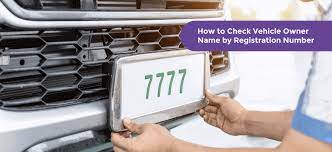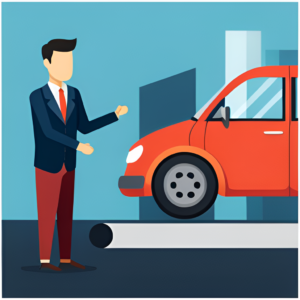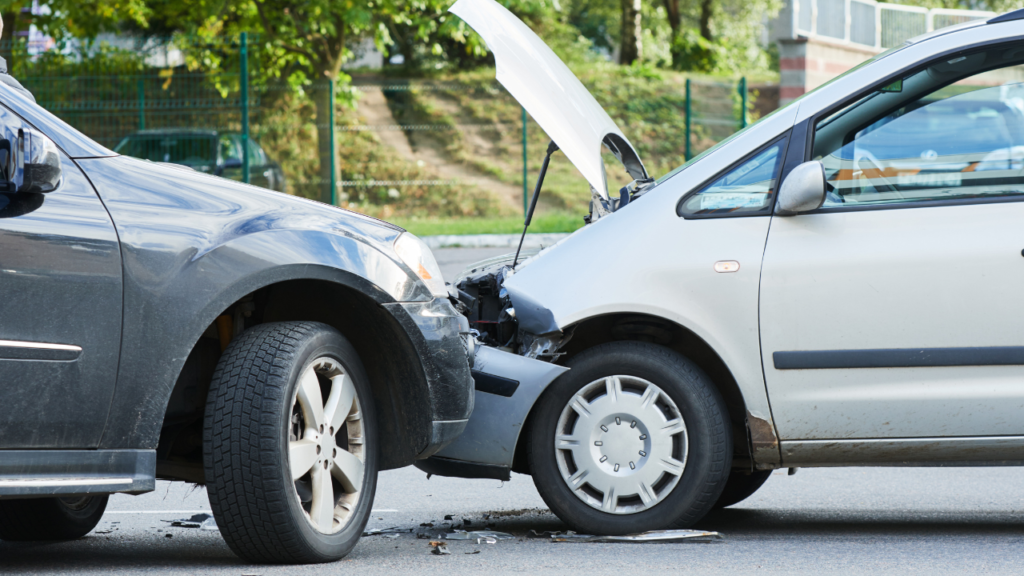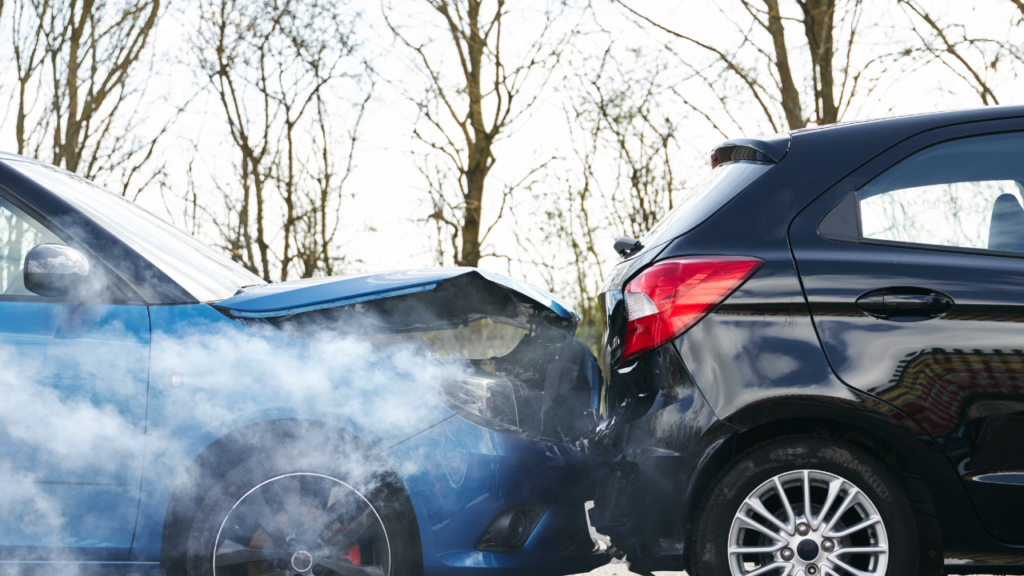Page Contents
1. Introduction
According to a 2013 Pew Research survey, a majority of Americans believe that not only should they be concerned about the information that is being collected about them in their online and digital activities, but that the extent of surveillance and monitoring by the government and law enforcement is such that it might restrict civil liberties and democratic practices.
Another survey by the Pew Research Center’s Internet & American Life Project found that 61% of Americans have had an experience with theft or misuse of their personal information in recent years. There have been many incidents that have been brought to light in recent years with concerns over privacy of personally identifiable information.

The illicit access to and high profile incidents associated with theft and misuse of social security numbers, credit card numbers, financial information and medical information are often the focus of discussions in the media and in both state and national legislatures.
As more and more information is captured when individuals engage in online and offline activity – and as news of large scale security breaches of government and private sector’s databases become frequent headline news – it is no surprise that there is a growing concern about the privacy of license plate information. License plate data is big business and used for a range of purposes – from mundane, like tracking car inventory on a dealership lot, to more resource and data intensive, such as optimization of red light camera placement and city traffic flow.
Further reading: What Happens If You Have a Car Accident Without Insurance?
And while opinions about whether license plate information should be publicly available vary, what is clear is that there is a potential wealth of knowledge about our habits, movements and activities that are made possible by the aggregation and sleuthing of these individual data points obtained from license plate visuals.
1.1. Importance of protecting personal information
However, the concerns about privacy do little to prevent people from being able to access this kind of information in a presumably legal way. This is why it is important for the law and regulations to better keep pace with changes in technology that may allow for abuse of personal information.
If you have the ability to find someone’s address through their vehicle’s license plate, then this can lead to abuse of that knowledge. Stalkers, fraudsters, and others who may cause harm to the owners of the vehicle can find a way to obtain personal address details simply by using the license plate information.
For this reason, governing officers and those who are able to use the DVLA’s search services must give a valid reason for doing so and must confirm that the reason for the search is in line with data protection laws.The truth of the matter is that a person can plug certain license plate details into a website and gain access to the address of the person who is registered as the owner of that vehicle.
Further reading: When Does a Fatal Car Accident Qualify for a Wrongful Death Lawsuit?
Many people can see a time when knowing an address might be useful. You have forgotten to get a birthday present for a friend and need to order something online for them. But for others, knowing where an address is linked to a specific vehicle through a person’s license plate is a matter that can go beyond mere convenience.
Personal information can easily be found using license plate details, and access to this type of information can lead to devastating consequences. This is why it is so vital to protect personal information at all costs. Protecting your own personal information is important, but in terms of license plate information, many people are unaware that this information is public.
1.2. Growing concern about license plate privacy
Formerly, the personally identifiable information a license plate may reveal was only accessible to law enforcement, licensed private investigators, and certain other professionals. With the development of automated license plate recognition systems, also known as ALPRs, and the expansion and accessibility of motor vehicle databases, there is a growing concern that our license plates are slowly becoming de facto tracking devices for the government and even private third parties.
ALPRs are high-speed, computer-controlled camera systems typically mounted on street poles, streetlights, highway overpasses, mobile trailers, or attached to police squad cars. The cameras are designed to provide a continual, real-time flow of data to police or private companies who are conducting criminal investigations.
Further reading: Hit & Run Accidents- hit and run lawsuit AND Compensation
ALPRs can scan and capture thousands of license plates per hour and convert each scanned image into a computer-readable file. These computer-readable files are linked to global positioning system, or GPS, data, which can be linked to a specific location and time. As a consequence, the time and location of every license plate image capture can be recorded and subsequently used to create a historical picture of the movements of every vehicle captured by the system, not just those targeted in a particular investigation.
All of this data is stored and managed by the government or an ALPR vendor and can form the basis of investigations well beyond the initial reasons for the data having been gathered. This is particularly worrisome given recent news of ICE and local law enforcement gaining access to this information to track and identify undocumented immigrants. The continued expansion of national security measures, such as real ID, also makes it increasingly feasible to aggregate and link all of this data together on a national scale and use it for a variety of purposes beyond just tracking vehicular movements.
Every time a person connects to a DMV database, even just to look up their favorite custom license plate, there is the potential for that data connection to be logged and then curated and monitored by private industry and the government alike.

Economic, location-based targeting or the marketing of consumer profiles are prime examples of potential commercial uses. It thus becomes more important to recognize the potential risks and misuse of one’s own license plate data and for the public at large to consider measures to protect this information from being easily exposed or abused.
These issues have already been topics of constitutional analysis given that our privacy rights and data protected interests have not yet been able to keep up with the advent and proliferation of these new technologies in the information age. Public commentary and debate is crucial between society, our legal scholars, and the courts to address questions about the balances in law enforcement between public safety, power, and individual liberties.
2. How license plate information is collected
Licence plate information is collected through a variety of means and ways, including the use of automated licence plate recognition systems, also known as ALPR, and the direct access to motor vehicle registers and driver’s licence databases, which are usually held as part of law enforcement agencies and government departments. Publicly available information is also utilised.
ALPR systems are high-speed, computer-controlled camera networks that are able to read licence plates and check them in real-time against databases, which can store information from a variety of sources, as long as it is considered necessary for their respective operation.
As explained by the Electronic Frontier Foundation, an American non-profit digital rights group, the systems typically capture a picture of the vehicle, the date, and the time of the picture, and the geographical location of the vehicle – like Google Street View images – in order to track the movements of the drivers and passengers over time. These systems can read up to 1800 licence plates per minute, across several lanes of moving traffic.
The Privacy Commissioner’s guidance on the use of ALPR in Australia highlights that the capacity to use and match all collected data means that ALPR raises unique issues in relation to the extent of data that may be collected, and how it may be examined, used and disclosed.
2.1. Automated license plate recognition (ALPR) systems
ALPR technology is beginning to be used in the UK by law enforcement agencies, but many advances are being spearheaded by private companies. Many private car parking companies are now installing ANPR camera systems in their car parks with the intention of automating the enforcement of parking terms and conditions. These systems can automatically issue charges to car park users when the cameras capture vehicles breaking the terms and conditions, such as overstaying the free period or failing to pay any parking charges.
While ANPR must only be used for the prevention and detection of crime or the enforcement of traffic contraventions, the Information Commissioner’s Office remains concerned about the data protection implications of the technology.
Further reading: what happens when car accident claim exceeds insurance limits?
Also, collectors that retain data can become repositories of sensitive information about people’s travel patterns. For example, a study by the American Civil Liberties Union found that the State of Maryland’s Motor Vehicles Administration computer system keeps data on where and when over 85 million photographs of license plates were collected. The analysis found that the data showed projected routes of travel of millions of people.
Also, the collected photographs allowed researchers to determine whether employment or a social relationship existed between drivers that frequently frequented the same parking lot. This latter type of research could be a treasure trove for people such as private investigators. Therefore, it is important to understand the security risks and the safeguards that you should apply to the data.

In a study conducted by the Government Accountability Office (GAO) in the United States, it was reported that 95 to 99 percent of the license plate images captured do not produce any “hits” or identification of vehicles of interest. However, much of this data is maintained by collectors for various lengths of time. Some jurisdictions retain the data for a matter of days, while others maintain it for years.
These different retention policies can have a significant effect on the concerns raised by ALPR technology – the longer the data is maintained, the more ability that there will be a complete picture of the private lives of drivers and the more ability there will be for misuse.
ALPR systems are high speed, computer controlled cameras that automatically capture all license plate numbers that come into view. Each system is equipped with either a fixed or mobile high speed camera, a computer and a “trigger” (such as a motion detector). Most often, the camera system is set to capture an image of a plate only when the trigger is activated by the presence of a vehicle.
2.2. Government and law enforcement databases
Government and law enforcement agencies use license plate information for a variety of purposes, from solving crime to ensuring that drivers have valid insurance. This information is stored in a national database called the Driver and Vehicle Licensing Agency (DVLA). This database contains the registration details of every vehicle in the UK, along with their registered keepers and, if they’ve updated it, their address.
The police can access this information when needed. In the US and Canada, the process is very similar to that of the UK and is also managed on a state or provincial level. All U.S. states use the American Association of Motor Vehicle Administrators (AAMVA) database. When the police in either the US or Canada gain access to this information, it’s typically listed under the Driver’s Privacy Protection Act (DPPA) of 1994, federal legislation outlining privacy protection.
Granularity on who can access and use this information differs from state to state; however, DPPA permits this information to be used by government agencies for certain purposes, including the investigation of motor vehicle theft, or the verification of information in the prevention or detection of crime. Usage is also permitted in civil and criminal proceedings. As states are responsible for governing the access and use of this kind of personal information, some license plate laws can become outdated.
For example, while restrictions on accessing personal driver information and the installation of automatic license plate recognition technology exist in some states, such as New York and New Hampshire, legal grey areas over the privacy and consent to record license plate information still persist.
2.3. Publicly available information
Contrary to popular belief, you cannot find someone’s address from their license plate number. There are many legal restrictions in place preventing people from obtaining this information. However, it is possible to find a significant amount of information about a person through their license plate number.
This is because your license plate number can be linked to the VIN (Vehicle Identification Number) and the vehicle registration which, in most countries, is a matter of public record. This sort of search is premised on the notion that access to the vehicle identification number, which is typically visible on the dashboard of the vehicle through the windshield, provides a method of uncovering basic ownership information.
You can request this information by filling out the proper forms, providing the fee and your driver’s license, and searching with the VIN. “Cyberlibel- Can Someone Find Your Address From Your License Plate?”, Michael Geist, Jan. 21, 2006. In Canada, the Cyberlibel chapter has upheld the notion that a license plate number found in a photograph of a car cannot be considered as personal information about the owner of the car.
3. Risks and potential consequences
By using automated license plate recognition systems, the government and businesses are able to collect large amounts of location-based information on everyday Americans. This information may be combined with other data about individuals to create detailed profiles about people and their movements.
Unlike other privacy laws, there are no federal regulations in place to protect the data obtained using automatic license plate recognition technology. As a result, the American Civil Liberties Union believes that license plate recognition technology has the potential to create permanent records of virtually everywhere anyone travels.
This type of surveillance can reveal many personal details about where citizens go to the doctor, where they worship, and where they socialize. This data can be used not only in real time – to track people as they move about in society – but also to create a detailed overview of a person’s public movements over a long period of time.
This kind of surveillance creates a strong potential for abuse as such data can be used to find out where individuals have been and who they have been associating with. For example, in the United Kingdom, a freedom of information request by the Guardian newspaper showed that dozens of local councils have been using automatic license plate recognition systems. Some councils have used this technology to enforce parking restrictions and bus lane restrictions; others have used the information in criminal investigations, such as tracking stolen vehicles or tackling drug trafficking.
However, the information revealed that these same councils have allowed a variety of organizations access to this personal data, including private companies and other third parties. As a result, the ICO has started an investigation into the use of monitoring measures, and privacy and data protection breaches.
The risks and potential negative consequences of this data collection and digital profiling include not only loss of privacy, but also the misuse and abuse of personal information by law enforcement officials and others, as well as stifling free speech and freedom of association, and perpetuating and amplifying social disparities as the impacts of over-policing and targeted surveillance in the physical world are translated into data and algorithms used in the digital world.
Such risks should be taken seriously: the information collected in one Minneapolis/St Paul International Airport parking ramp showed that more than 125,000 unique vehicles were logged during a five-month period, and groups such as the Minnesota Privacy Project have raised concerns about such technology.
3.1. Stalking and harassment
In recent years, license plate information has increasingly been used for abusive purposes. Stalking is a prevalent and especially dangerous form of abuse where an individual uses persistent and unwanted attention, contact, or some form of harmful conduct to harass another person. Research indicates that stalking is often an early indicator of lethality, and that one in four women and one in 13 men will be victims of this crime in their lifetimes.
An abusive partner or ex-partner is the most commonly reported source of stalking. The ability to track someone’s movements through their license plate makes it easier for abusers to confront, attack, or flee from domestic violence victims. The National Domestic Violence Hotline describes how technology, including license plate readers and publicly available information sources, is being utilized by abusers in a variety of ways.
These include monitoring a partner’s location, following the target in person, damaging the victim’s property, and obtaining personal data for fraudulent or harassing purposes. The Hotline provides information and resources for victims and advises that if their safety is at risk, victims should create a safety plan and contact 911 if they are in immediate danger.
The misuse of license plate information has led to new laws in some states making it illegal to use automated processes to collect data from multiple license plates, and that such information may not be provided to a third party unless in accordance with a written policy and applicable state or federal laws.
However, in the vast majority of states, there is no such protection over the release of information such as license plate data, and little that can be done to prevent it from being obtained or used for malicious purposes.
3.2. Identity theft and fraud
The risks of identity theft and fraud from a license plate search are similar to the risks of using the internet. People are at risk every time they enter personal information into a computer. License plates are linked to the car, and there are a variety of different ways that the license plate and the car are connected in searches.
When an identity thief gains access to this data, they can cause harm in a number of ways. For example, a thief might use the plate number in order to gain access to the price paid for the vehicle. Once they have that information, they might be able to take out a loan against the vehicle’s value. At the other end of the spectrum, a person using a license plate lookup might find out other details.
For example, by using a dependable service, it is possible to uncover the vehicle identification number (VIN). This number is unique to a vehicle and can be used to learn a lot about the history and status of a car. The risk of this information being accessed by identity thieves makes using a license plate search a risky way to find information about a vehicle. The risks of using the internet for transactions are widely known.

This is why people are warned about the possibility that their bank or credit card details might be stolen when they buy goods online. However, the sort of data that is entered for a license plate search, such as names and address details, is vulnerable to a different sort of attack.
By using information found through a license plate search, an identity thief can take out loans or buy goods in the victim’s name. In addition to the material losses and the inconvenience that this causes, the victim’s credit rating can be damaged too. All of this can take a lot of time and effort to put right and can be a big worry for victims.
Therefore, it is essential to be aware of the risks of using a license plate search to find vehicle information and to remain cautious if you believe that your data might have been accessed.
3.3. Invasion of privacy
In Ontario, there are three different laws that a person may be charged with if he or she unlawfully accesses or intercepts someone else’s private communication or obtains someone else’s personal information from the motor vehicle records. Therefore, the risk of invasion of privacy in Ontario resulting from the accessibility of personal information from license plates is prohibited and punishable.
Governments or private organizations that support these kinds of progresses give up the trust of the public because government officials in a free and democratic society are elected to act on behalf of their citizens, not to manipulate their lives.
Furthermore, the issue of license plate information has also been introduced to the discussion as a result of advances in technology, and our modern society has created a non-stop surveillance machine. Many courts and organizations around the world have recognized the serious risk that supporting this kind of spying presents. This risk is particularly high for unpopular groups, largely because the ability to obtain information about the particular movements of these groups allows for targeted oppression at the maximum.
In the Criminal Code of Canada – section 162(1), regarding voyeurism, which is the quality or state of being a surreptitious observer of private activities, it has explicitly prohibited and declares that anyone who commits the act of voyeurism will be liable to be imprisoned for not more than 5 years. Also, in section 162(2), it establishes that the offense of child pornography consists of secretly observing or making a visual recording of a person’s sexual activity without their consent, whether the person is a younger or an adult.
In addition to these four torts, there is no single law in Canada that establishes the definition or the tort of invasion of privacy specifically. Invasion of privacy, as a legal concept that provides individuals with their freedoms from intrusion, mainly depends on a series of legislations and court decisions.
In a legal perspective, invasion of privacy is related to the four main privacy torts, which are intrusion of solitude, public disclosure of private facts, false light, and commercial appropriation of name or likeness. Tort refers to a civil wrong or wrongful act, whether intentional or accidental, leading to someone else suffering harm or loss and being liable in the law.
Moving on to the next topic, which is invasion of privacy, most of us, when asked about what we understand of privacy, will mention something about personal spaces and private lives. But the concept of privacy is much more challenging than that, especially its physical privacy. Physical privacy is the privacy of the physical body or the living spaces.
4. Steps to protect your license plate information
Lastly, you should report any suspicious activities to the authorities. This can help in intercepting any potential crime before it takes place. By reporting, necessary steps can be taken up in ensuring that unauthorized access to your personal data. Such steps may include data monitoring, more security or even change of the car license plate number.
Fourthly, be cautious when sharing license plate photos online. One of the potential threats is that tech-savvy criminals can easily pick such details and find out where you live. Criminals and vandals are known to use such information to victimize other innocent citizens. Therefore, you should always be cautious about who sees your car and that you keep the license plate hidden from any potential cameras. Thirdly, ensure that your VIN can’t be seen from outside.
Every vehicle has a 17-character Vehicle Identification Number, commonly referred to as VIN. This unique identification number is very critical for various reasons. However, one has to ensure that the VIN is not showing through the windshield as it may also expose license plate lookup details. This is because in most cases the VIN is placed on the front part of the dashboard, on the driver’s side.
Secondly, consider using license plate covers or frames. As aforementioned, in most states personal license plates are publicly available under the freedom of information laws. Therefore, hiding the characters and numbers will be an additional method on how to protect license plates from being looked up. Nevertheless, it is important to note that use of license plates covers and frames is not allowed in some states.
California Vehicle Code Section stipulates that it is illegal to cover a license plate to prevent it from being read clearly. Therefore, confirm with your state’s department of motor vehicle prior to using any emoji number plate cover. First, check the visibility of your license plate. The protection steps will be futile if your car plate information is in the public domain. Importantly, you should not only do this from the front and rear license plates but also at different distances.
If the details on the plates are legible even at a distance, it implies that unauthorized people can easily take advantage and use the information for the wrong purposes. Consequently, one may easily find your address from your license plate.
4.1. Use license plate covers or frames
Some companies claim that their products are “guaranteed legal” and compliant with all state laws. For example, the “AntiPhotoLicensePlateCover” acts as a clear spray and promises to reflect traffic enforcement cameras and prevent any picture of your license plate from being taken correctly.
When selecting a cover or frame, you should make sure that it provides maximum visibility and does not obstruct the numbers or letters to avoid a potential traffic violation. In Texas, for example, it is an offense to display a license plate that has any material or covering which alters the appearance of numbers or letters on the plate. California also has restrictions, stating that it is unlawful to use any electronic device that locates, monitors, processes, records, or transmits the license plate number and other information on the vehicle. Therefore, you should check what the laws and regulations are in your state before purchasing and using a cover or frame.
License plate covers and frames are a popular option for reducing the risk of someone being able to find your address from your license plate. They can be purchased in a variety of colors, materials, and designs to suit your preference. The purpose of covers and frames is to obscure some or all of the letters and numbers on your license plate. For example, some cover designs will shield the characters from automatic license plate recognition systems and cameras, whereas others might only block the view from certain angles.
However, you need to be aware that there are laws and regulations surrounding the use of license plate covers in many states.
4.2. Be cautious about sharing license plate photos online
In addition to directly capturing images of license plates, law enforcement agencies can issue a “be on the lookout” alert that includes a license plate number. BOLOs may be placed on the web and on social media. Every time someone takes a picture and uploads it to the internet, there’s a chance that image will be retained indefinitely – even if the person who originally posted it takes it down.
There are many websites and mobile apps, like a popular list maintained by the Electronic Frontier Foundation, that help citizens understand what data collection technologies their local law enforcement agencies use and to try to track the surveillance history of particular local agencies.
By submitting pictures of license plates and locations to these databases, drivers can help track where and how this technology is being used. By extension, privacy advocates and researchers can use this information to influence public opinion and legislative efforts. Because of the risks associated with accidentally capturing and sharing license plate images, it’s generally a good idea to avoid sharing photos online, especially if they could potentially make it easier to obtain your address.
Even when posting pictures without a specific mention of a license plate or car registration, there remains a risk of inadvertently including identifying information in the picture that could be abused by bad actors. When pictures are posted on public social media and image-sharing platforms, they can be secretly processed by algorithms and then cross-indexed by location, time, and other data retained by big tech companies.
These tech companies sometimes offer law enforcement agencies the ability to monitor when license plates or faces associated with BOLO alerts are later detected in uploads of pictures from the general public. Also, license plate data is commercially available from some big tech firms as well, and companies like Vigilant Solutions (a subsidiary of Motorola Solutions) have built nationwide databases of license plate reader data.
These databases, sometimes called License Plate Recognition (LPR) data, have come under scrutiny recently for their use by Immigration and Customs Enforcement (ICE) to track and profile potential undocumented immigrants. When being cautious about sharing license plate photos online, it’s important to remember that other forms of digital publication, like submitting pictures to databases or using recommended hashtags, can make it easier for tech companies and law enforcement to find and use those images, even if they were originally uploaded with good intentions.
By contrast, using privacy-focused technologies, like submitting data to the EFF’s data center, gives individuals the chance to actively shape public opinion on digital rights and to contribute to research that could shape future legislative efforts. With a better understanding of what these digital risks are and how to mitigate them, everyone can feel a little more secure in their ability to help safeguard the digital and physical safety of their communities.
A great way to protect your personal information (whether it is license plate information or other types of information) is to regularly check for unauthorized access to your information. Unauthorized access to personal information means that someone has obtained or used your personal details without permission.
There are many services available online (some are free and some have a fee) that allow you to check whether there has been any unauthorized access to your personal information. For people who live in the United States, a good place to start would be the ‘IdentityTheft.gov’ website, which offers a free privacy and data security resources, as well as information about what you can do if you suspect that someone has improperly accessed or used your personal information.
Also, consider regularly checking to see which entities have accessed your driving record. Admittedly, individual people do not often have reason to check driving records, but if you notice that an entity has accessed your personal information and you do not recognize the name of the entity or you believe that the entity accessed to your information was not lawful or authorized then that is something which you should follow-up.
You should also consider subscribing to an identity monitoring service, which can help you to spot possible misuse of your personal information. Such services will notify you of any attempts to register new accounts or make other relevant changes to your credit report – things that could be an indication that someone has improperly accessed and is trying to misuse your personal information.
Such subscriptions will usually involve signing up to some kind of service (which may include signing some form of legally binding contract) and agreeing to pay a regular fee (although some may offer free access to the monitoring service). However, when considering whether it might be appropriate to subscribe to a particular monitoring service, you should be cautious and first check that the service in question will provide adequate protection of your personal data.
As such, make sure to check whether the service has a published privacy policy (and, if so, review the contents of that policy); consider the types of personal information that the service is requesting from you and the purposes for which that information will be used; and assess whether the service in question has any history of data breaches or complaints.
Always remember that you should be careful not to disclose your private details any more than is necessary for the purpose – or legitimate aim – for which the details are being requested. Also, if you do see that an entity has improperly accessed or used your information, be sure to report it to the police and then notify that your information has been subject to unauthorized access.
It is crucial to report any suspicious activity involving your license plate information to the authorities as soon as possible. This could include, for example, unauthorized attempts to access your information, suspicious or unexplained mail or phone calls, damage to your property, or any threats or harassment.
By making a report, you directly inform relevant agencies of the situation, meaning that they can take action promptly. You can also protect yourself from potential future risks and consequences that may be more difficult to address if you do not make a report at the time. If you believe that your personal safety is at risk due to the suspicious activity, always seek help from the police or law enforcement immediately.
This might include contacting the police to make a report, cooperating with an investigation, or following advice provided by the authorities. The specific process and resources available to you will depend on the nature of the suspicious activity as well as local laws and regulations.
For example, in the United States, the Federal Trade Commission offers a comprehensive online resource for reporting identity theft and developing a recovery plan and in the United Kingdom, you can report fraud and cybercrime to Action Fraud.
It is recommended to keep a record of any suspicious activity in case further information is required by the authorities or relevant agencies. For example, you could note down the date, time, and a description of the activity, any names or contact details that are provided, and any action taken by you or the authorities in response.







